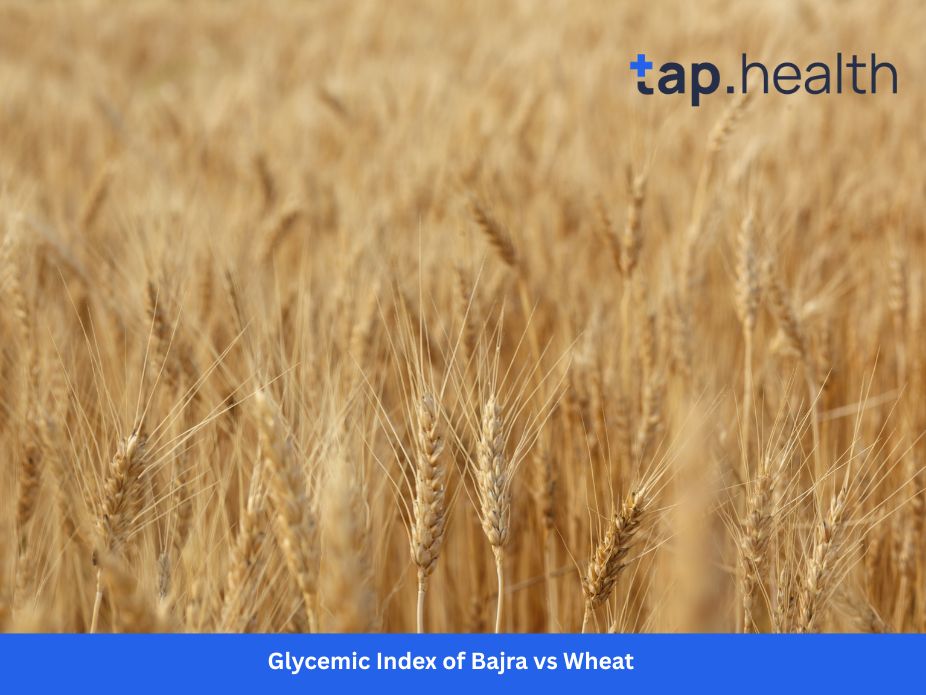Papaya, often referred to as the “fruit of the angels,” is a tropical fruit known for its sweet flavour and numerous health benefits. But for those managing diabetes, understanding the glycemic index (GI) of foods they consume is crucial. The glycemic index helps determine how quickly food raises blood sugar levels. In this blog, we’ll explore the glycemic index of papaya, how it affects blood sugar, and whether it’s a safe and healthy option for diabetics. Additionally, we will address related questions like “Is papaya good for diabetics?”, “Can diabetic patients eat papaya at night?”, and more. Read on for a complete breakdown.
What is the Glycemic Index?
The glycemic index (GI) is a numerical system that ranks foods based on how they affect blood sugar levels. Foods are ranked on a scale from 0 to 100:
- Low GI foods (55 or less): These foods release sugar into the bloodstream gradually, helping maintain stable blood sugar levels.
- Medium GI foods (56-69): These cause a moderate rise in blood sugar.
- High GI foods (70 or more): These quickly raise blood sugar levels, which can be problematic for diabetics.
The goal is to focus on low GI foods that do not cause rapid blood sugar spikes, making them especially beneficial for people with diabetes.
Glycemic Index of Papaya
So, where does papaya stand on the glycemic index scale? The glycemic index of papaya is around 60, which places it in the medium GI category. This means that papaya raises blood sugar levels more slowly than high-GI foods like white rice or white bread, but faster than low-GI foods such as most vegetables and whole grains.
Although papaya has a medium GI, it is still considered a relatively safe fruit for diabetics, especially when consumed in moderation. The glycemic load (GL), which takes into account the amount of carbohydrate in a serving of food, is another important factor to consider. Papaya has a low glycemic load, meaning the total effect on blood sugar is not as significant as that of higher-GI foods.
Why Is the Glycemic Index of Papaya Important?
The glycemic index is important because it helps determine how a food will affect your blood sugar. Foods with a lower GI provide a slower, more sustained release of glucose into the bloodstream, making them ideal for managing blood sugar levels and supporting overall health. Papaya, being a medium-GI fruit, offers a balanced release of sugar, helping prevent sudden spikes in blood glucose levels.
Nutritional Benefits of Papaya
Before diving into the effects of papaya on blood sugar, it’s essential to understand the nutritional profile of this fruit. Papaya is loaded with several vitamins and minerals that are beneficial for overall health. Here’s what you get in one cup (about 150g) of papaya:
- Calories: 59 kcal
- Carbohydrates: 15g
- Protein: 0.6g
- Fibre: 2.5g
- Vitamin C: 88mg (about 100% of the daily value)
- Vitamin A: 112mcg
- Folate: 53mcg
- Magnesium: 33mg
Papaya is an excellent source of vitamin C, vitamin A, and antioxidants like carotenoids, which are known for their ability to fight oxidative stress and support immune function. Its high water content makes it a hydrating fruit, perfect for digestion and skin health.
Is Papaya Good for Diabetics?
Given its medium glycemic index, papaya can still be a good option for diabetics. While it does cause a moderate increase in blood sugar, its nutritional profile makes it beneficial for overall health. Here are some reasons why papaya is a great fruit for diabetics:
1. High Fibre Content
Papaya is rich in fibre, which helps slow the absorption of sugar in the bloodstream. This fibre content aids digestion and prevents blood sugar spikes.
2. Rich in Antioxidants
Papaya is packed with antioxidants such as beta-carotene, vitamin C, and flavonoids, which help protect cells from oxidative stress. This is particularly important for people with diabetes, as they are more prone to cell damage due to high blood sugar levels.
3. Supports Digestive Health
The enzyme papain in papaya aids digestion, helping the body break down proteins and promoting gut health. A healthy gut is crucial for managing blood sugar levels, as an imbalance in gut bacteria can affect insulin sensitivity.
4. Low Glycemic Load
Papaya has a low glycemic load, meaning it doesn’t release sugar rapidly into the bloodstream. This makes it a better choice compared to high-GI fruits, especially in large quantities.
Can Diabetic Patients Eat Papaya at Night?
One common question people ask is whether it’s safe to consume papaya at night, particularly for those managing diabetes. The short answer is yes, diabetics can eat papaya at night. However, moderation is key.
Why It’s Safe:
- Slow digestion: Papaya’s medium GI ensures that it is digested slowly, releasing sugar steadily into the bloodstream.
- Helps with digestion: The papain enzyme can assist with digestion and improve gut health, which can be beneficial before bedtime.
- Rich in antioxidants: Consuming papaya at night can also provide a boost of antioxidants, which help fight oxidative stress and inflammation that may build up during the day.
However, it’s always recommended to pair papaya with a source of protein or healthy fats for a balanced meal. This will help further slow the release of sugar into the bloodstream and prevent any blood sugar spikes.
Will Papaya Spike Insulin?
Papaya, due to its medium glycemic index, can cause a moderate rise in blood sugar. However, it is unlikely to cause a significant insulin spike when consumed in moderate amounts. The fibre and water content in papaya help slow the absorption of sugar, reducing the impact on insulin secretion.
For those with diabetes, it’s essential to manage portion sizes to avoid overeating and causing larger-than-necessary increases in insulin levels. Eating papaya in combination with other foods that are low-GI (like nuts or seeds) can further balance its effects.
Who Should Not Eat Papaya?
While papaya is generally safe for most people, there are certain cases where it may not be suitable. Here are some groups that should be cautious when consuming papaya:
1. People Allergic to Papaya
Some individuals may experience an allergic reaction to papaya, particularly those who have a sensitivity to latex, as papaya contains an enzyme called chymopapain, which may cause irritation.
2. Pregnant Women (In Excess)
Although papaya is a healthy fruit, unripe papaya can contain higher levels of latex, which can potentially trigger contractions or lead to complications during pregnancy. Pregnant women should avoid unripe papaya and consume only fully ripe fruit in moderation.
3. Individuals with Kidney Issues
Papaya is high in potassium, which is usually beneficial for most people. However, for individuals with kidney disease, excess potassium can be problematic, as the kidneys may have difficulty processing high potassium levels.
Key Takeaways
- Papaya has a glycemic index of 60, placing it in the medium GI category.
- It can be a healthy fruit for diabetics when consumed in moderation, offering high fibre, antioxidants, and digestive enzymes.
- Moderation is key for diabetics, especially in the evening. Pairing papaya with proteins or healthy fats can enhance its benefits.
- People with latex allergies, pregnancy, or kidney issues should be cautious when consuming papaya.
Frequently Asked Questions on Papaya Glycemic Index
Is papaya good for diabetics?
Yes, papaya is good for diabetics due to its high fibre content, antioxidants, and low glycemic load, making it a healthy fruit option in moderation.
What is the lowest glycemic fruit?
Fruits like cherries, grapefruit, and apples have some of the lowest glycemic indices, making them ideal for diabetics.
Can diabetic patients eat papaya at night?
Yes, diabetic patients can eat papaya at night in moderation. Pair it with protein or healthy fats to balance blood sugar levels.
Will papaya spike insulin?
Papaya’s moderate glycemic index ensures that it doesn’t cause a significant insulin spike. However, portion control is essential.
Who should not eat papaya?
People allergic to latex, pregnant women (in excess), and individuals with kidney problems should avoid or limit papaya consumption.
By understanding the glycemic index of papaya and its effects on blood sugar, you can make more informed decisions about your diet, especially if you are managing diabetes.



